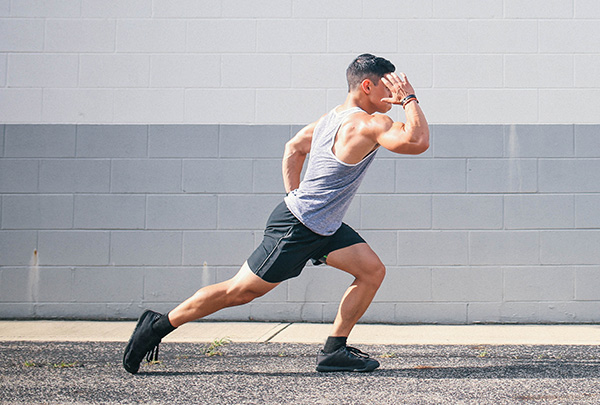
Benefits of High Intensity Training.
High-Intensity Training (HIT), often referred to as High-Intensity Interval Training (HIIT), is a form of exercise that alternates short bursts of intense effort with periods of rest or low-intensity recovery. This training approach offers several benefits that make it a popular and effective choice for many fitness enthusiasts:
Efficient Time Use: HIT workouts are typically shorter than traditional steady-state cardio workouts. You can achieve comparable or better results in less time, making it suitable for busy schedules.
Improved Cardiovascular Health: HIT can significantly improve cardiovascular fitness. The intense bursts of effort followed by brief recovery periods challenge the heart and improve its ability to pump blood efficiently.
Increased Calorie Burn: HIT can boost calorie burn not only during the workout but also post-exercise. The afterburn effect, known as excess post-exercise oxygen consumption (EPOC), means your body continues to burn calories at an elevated rate for hours after the workout.
Fat Loss: HIT is effective for fat loss because it promotes the burning of both carbohydrates and fat for energy. The combination of calorie burn and improved metabolism can lead to weight loss and fat reduction.
Muscle Preservation: HIT workouts prioritize preserving muscle mass. While steady-state cardio can sometimes lead to muscle loss, HIT helps maintain or even build muscle while promoting fat loss.
Metabolic Health: HIT improves insulin sensitivity, helping regulate blood sugar levels and reducing the risk of type 2 diabetes. It can also have a positive impact on other metabolic markers like cholesterol levels.
Time-Efficient Strength Gains: HIT can be adapted to include strength training exercises. Short, intense weightlifting sessions can help increase muscle strength and power in less time than traditional strength training programs.
Variety and Fun: HIT offers a diverse range of exercises and workouts, making it less monotonous than long, steady-state cardio sessions. The variety can make exercise more enjoyable and sustainable.
Accessible to Most Fitness Levels: HIT workouts can be tailored to various fitness levels. Beginners can start with low-intensity intervals and gradually increase intensity as their fitness improves.
Minimal Equipment Required: Many HIT workouts can be done with little to no equipment, making it accessible for home workouts or when you have limited access to a gym.
Adaptability: HIT can be adapted to suit various fitness goals, including improving endurance, building muscle, and enhancing overall fitness.
Mental Benefits: The intensity of HIT can stimulate the release of endorphins, promoting feelings of well-being and reducing stress.
High intensity training is effective for fat loss because it promotes the burning of both carbohydrates and fat for energy.
It’s important to note that while HIT offers numerous benefits, it can be physically demanding and may not be suitable for everyone. Individuals with certain medical conditions or injuries should consult with a healthcare provider or fitness professional before starting a HIT program. Additionally, incorporating a variety of workout modalities into your fitness routine can provide a well-rounded approach to overall health and fitness.



Hit Intensity training ideas
High-Intensity Training (HIT), also known as High-Intensity Interval Training (HIIT), involves alternating between short bursts of intense exercise and brief recovery periods. Here are some examples of HIT workouts that you can incorporate into your fitness routine:
Sprint Intervals: Find a flat or uphill stretch of terrain and sprint for 20-30 seconds at maximum effort, followed by a 60-90 second slow walk or jog to recover. Repeat for 10-15 minutes.
Tabata: Named after Dr. Izumi Tabata, this protocol consists of 20 seconds of all-out effort followed by 10 seconds of rest. It can be applied to exercises like burpees, jump squats, or push-ups.
Stationary Bike Sprints: On a stationary bike, pedal as hard as you can for 30 seconds, followed by 30-60 seconds of slow pedaling or rest. Repeat for 10-15 minutes.
Bodyweight Circuit: Perform a series of bodyweight exercises (e.g., jumping jacks, mountain climbers, high knees) at maximum effort for 30 seconds, followed by 15-30 seconds of rest. Repeat for multiple rounds.
Kettlebell Swings: Swing a kettlebell with proper form for 30 seconds, followed by 30 seconds of rest. Repeat for 10-15 minutes.
Battle Ropes: Alternate between 20-30 seconds of intense battle rope exercises (e.g., waves, slams) and 30-60 seconds of rest or slow waves. Continue for 10-15 minutes.
Rowing Machine Intervals: Row at a high intensity for 30 seconds, followed by 30-60 seconds of light rowing or rest. Repeat for 10-15 minutes.
Stair Climbing: Climb a set of stairs or use a stair climber machine at maximum effort for 30 seconds, followed by 30-60 seconds of rest or slow stepping. Repeat for 10-15 minutes.
Box Jumps: Perform box jumps onto a sturdy platform for 30 seconds, followed by 30-60 seconds of rest. Repeat for 10-15 minutes.
Hill Sprints: Find a steep hill and sprint uphill for 20-30 seconds, then walk or jog downhill for recovery. Repeat for 10-15 minutes.
Jump Rope: Jump rope as fast as possible for 30 seconds, followed by 30-60 seconds of rest. Repeat for 10-15 minutes.
Circuit Training: Create a circuit of strength or bodyweight exercises, such as squats, push-ups, lunges, and planks. Perform each exercise for 30 seconds with 15-30 seconds of rest between exercises. Repeat for multiple rounds.
Treadmill Sprints: On a treadmill, run or sprint at your maximum speed for 30 seconds, followed by 30-60 seconds of rest or walking. Repeat for 10-15 minutes.
Remember to warm up before starting a HIT workout, and cool down afterward with light stretching or low-intensity movements to gradually bring your heart rate down. HIT workouts are highly adaptable, allowing you to modify exercises, durations, and rest intervals to suit your fitness level and goals. Always prioritize proper form and listen to your body to prevent overexertion or injury.
